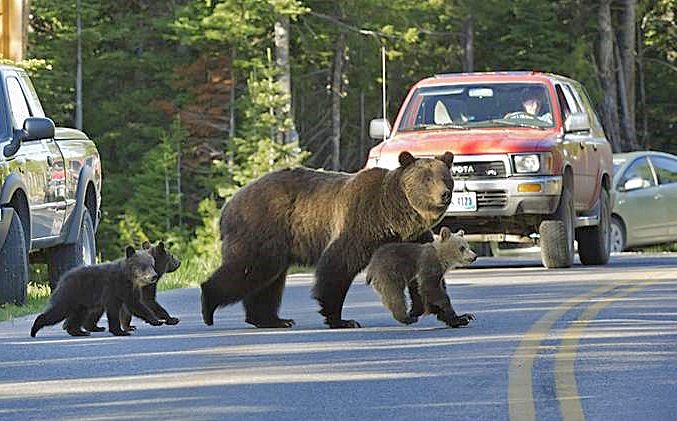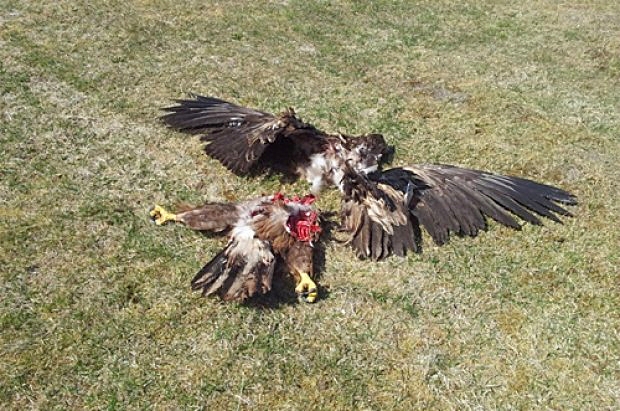Here is a simple recommendation for how sponsors could best “fix” the bill. Take out the federal funding parts, eliminate all the federal regulatory impediments regarding possession, rearing, and reintroduction of endangered species, and stand aside while state wildlife experts do their jobs.
Another Billion Dollars Should Do It
Folks who worry about the loss of threatened and endangered species should be relieved to know that Congress is finally considering an entirely new approach – creating a new federal fund, and a new committee. A bipartisan group led by Reps. Debbie Dingell (D-MI) and Jeff Fortenberry (R-NE) have reintroduced a languishing bill called the “Recovering America’s Wildlife Act,” which would dedicate nearly $1.4 billion for conservation of declining fish and wildlife species. The bill enjoys widespread support, largely because it would empower state wildlife experts, rather than federal agencies. A previous version would have used energy revenues, but that rankled anti-energy congressmen, so the new version just allocates money from the general treasury, off-budget and exempt from ppropriations.
Sponsors say this approach is more likely to recover endangered species than previous attempts, because it relies on the expertise of states. It would actually prioritize projects based on State Wildlife Plans, and it would pass the money directly to states. That approach has tremendous merit, because state wildlife agencies know more about their species, and can put more resources on the ground faster than distant bureaucracies. Dictates from Washington actually hamper state recovery efforts in many cases, as in Colorado’s experience with lynx and sage grouse.
Rep. Dingell has credibility on the issue, considering her family history. Her late husband, Rep. John Dingell, sponsored the Endangered Species Act in 1973. His father, also a congressman, helped create one of the nation’s premier conservation laws, the Dingell-Johnson Act. It allocates excise taxes on boats and fishing equipment to fish restoration and management. Moreover, it prohibits legislatures from diverting fishing license revenue to any purpose other than administering state fish and game agencies. That requirement was copied from the earlier Pittman-Robertson Act of 1937, which dedicates federal funds from the sale of guns and ammunition to wildlife agencies, and protects state hunting license revenue from diversion to non-wildlife purposes. These laws have prevented considerable legislative mischief for many years. So, the current Dingell’s support for environmental causes is natural.
It is encouraging to see federal authorities finally acknowledge state wildlife expertise, as many of us have advocated for years. But a careful reading of the proposed bill reveals exactly the reason so many well-meaning efforts fail. It does not actually say what its sponsors, and many supporters, claim.
As explained by the National Wildlife Federation, the bill is designed to provide states, territories, and tribes with $1.4 billion annually “to catalyze proactive, on-the-ground, collaborative efforts to restore essential habitat and implement key conservation strategies.” The bill’s text outlines the purpose of the new fund, “to carry out, revise, or enhance existing wildlife and habitat conservation and restoration programs and to develop and implement new wildlife conservation and restoration programs to recover and manage species of greatest conservation need.” That is the right approach, and it ought to be implemented by States, as promised.
But those are not the only authorized uses for the new money. States can also use it for already-existing programs, including law enforcement, writing wildlife management plans, wildlife education, and recreation programs, all of which are routine in-house operations, none of which are new. And none of which do anything to recover endangered species. Further, the bill requires ten percent of the money to be given to States in competitive grants, selected by a new federal advisory committee. Ten percent of that grant money must be used for recovery of endangered species. In other words, virtually all of the new money can be absorbed by existing programs, and of the $1.4 billion new dollars, exactly $14 million might find its way to actual projects to raise, reintroduce, and restore endangered species.
Colorado alone spends more than that every year on programs that actually work. We are proud of the state-led recovery of species like lynx, river otters, desert bighorns, moose, greater prairie chickens, greenback cut-throat trout, sharptail grouse, boreal toads, peregrine falcons, and others. This new fund would provide very little more money to work with, but plenty of additional federal requirements. For instance, every State must submit a detailed report to Congress every five years on all its uses of the grant money. Such reports would require significant staff time that could otherwise be spent on species work.
Of course, endangered fish, birds, and animals would be completely unaware of all this activity –supposedly on their behalf.
Wildlife recovery does not require new federal budget and accounting tricks, or committees, or reports that sit on shelves gathering dust. It requires state professionals with hatcheries and facilities, allowed to do their work and accountable to their citizens, not to congressional committees. Don’t get me wrong –this bill can still be fixed, especially since no hearing has yet been scheduled. Sponsors still have time to make a few major corrections, so the states can actually “Recover America’s Wildlife,” as promised.
Here is a simple recommendation for how sponsors could best “fix” the bill. Take out the federal funding parts, eliminate all the federal regulatory impediments regarding possession, rearing, and reintroduction of endangered species, and stand aside while state wildlife experts do their jobs.
Greg Walcher is president of the Natural Resources Group and author of “Smoking Them Out: The Theft of the Environment and How to Take it Back,” now in its second printing. He is a former head of the Colorado Department of Natural Resources, and former President of Club 20.
More information: www.GregWalcher.com
Free Range Report
Thank you for reading our latest report, but before you go…
Our loyalty is to the truth and to YOU, our readers!
We respect your reading experience, and have refrained from putting up a paywall and obnoxious advertisements, which means that we get by on small donations from people like you. We’re not asking for much, but any amount that you can give goes a long way to securing a better future for the people who make America great.
[paypal_donation_button]
For as little as $1 you can support Free Range Report, and it takes only a moment.



